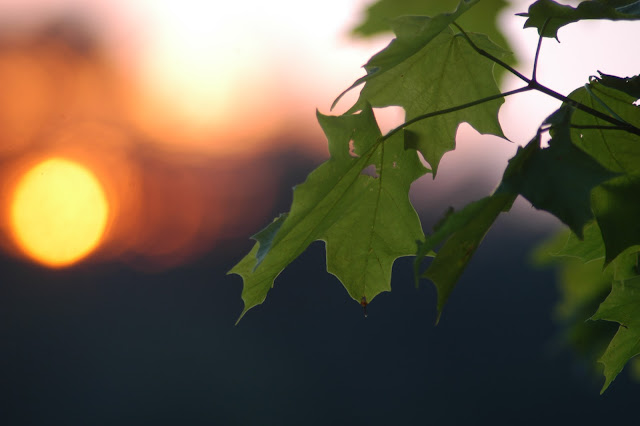Aceraceae - Maple Family
"A Year With the Trees" - Tree Number 1
Winter Tree Identification is quite challenging and fun. I have so much fun knowing what the trees are in the winter. The trees I do not recognize, I will get out my books and computer and figure it out.
The Winter Box Elder can be identified by looking at the twigs and bark.
On the twig, leaf scars meet in a raised point and you will see the leaf scars circling the stem.
"A Year With the Trees" - Tree Number 1
Summer
The Box Elder tree has a compound leaf with three to five leaflets per leaf. The leaflets have coarse teeth. The twigs are green and hairless. They grow in pairs in an opposite arrangement. The flowers are like stacks of samaras, and are quite beautiful.
Fall
 |
| Box Elder leaves in September |
 |
| Box Elder on October 1st at Carrier Park in Asheville, NC |
Winter
Winter Tree Identification is quite challenging and fun. I have so much fun knowing what the trees are in the winter. The trees I do not recognize, I will get out my books and computer and figure it out.
The Winter Box Elder can be identified by looking at the twigs and bark.
On the twig, leaf scars meet in a raised point and you will see the leaf scars circling the stem.
Twigs are greenish to purple and slender and hairless. They grow opposite each other on the branches.
The bark will be smooth while the tree is young. The tree will develop bark that is gray brown with interlacing ridges and furrows.
Buds are covered in whitish hairs. The terminal bud is pointed, reddish, woolly.
Epicormic branches can be seen sticking out on the trunk; they are usually green. These are little random branches that just stick out on the trunk.
Here is my drawing/interpretation of a Box Elder Twig.
Buds are covered in whitish hairs. The terminal bud is pointed, reddish, woolly.
Epicormic branches can be seen sticking out on the trunk; they are usually green. These are little random branches that just stick out on the trunk.
Here is my drawing/interpretation of a Box Elder Twig.
 |
| Box Elder Twig Rebecca Priddy |
The Champion Box Elder trees
There are 3 champion Box Elder trees listed in the North Carolina forest service champion tree program. One of them is the Murphy, North Carolina. It is 66 feet tall with a circumference of 147 inches. https://www.ncforestservice.gov/urban/tree_detail.asp?Tree_ID=664
My favorite Box Elder Tree
My favorite Box Elder lives in West Asheville on the walk by the river near Carrier Park. I think the Box Elder may be one of the most photogenic trees I have ever photographed.
Plant a Box Elder Tree
The Box Elder tree is one of the host plants for the Cecropia silkmoth, the largest moth in America.
 |
| http://commons.wikimedia.org/wiki/File:Hyalophora_cecropia_01.jpg |
This tree is a masterpiece of art. The seeds are eaten by wildlife. The sap makes syrup. The branches are great for climbing. The samaras are beautiful. The shade to sit under and read is just perfect.
For the love of the trees,
Becky














































